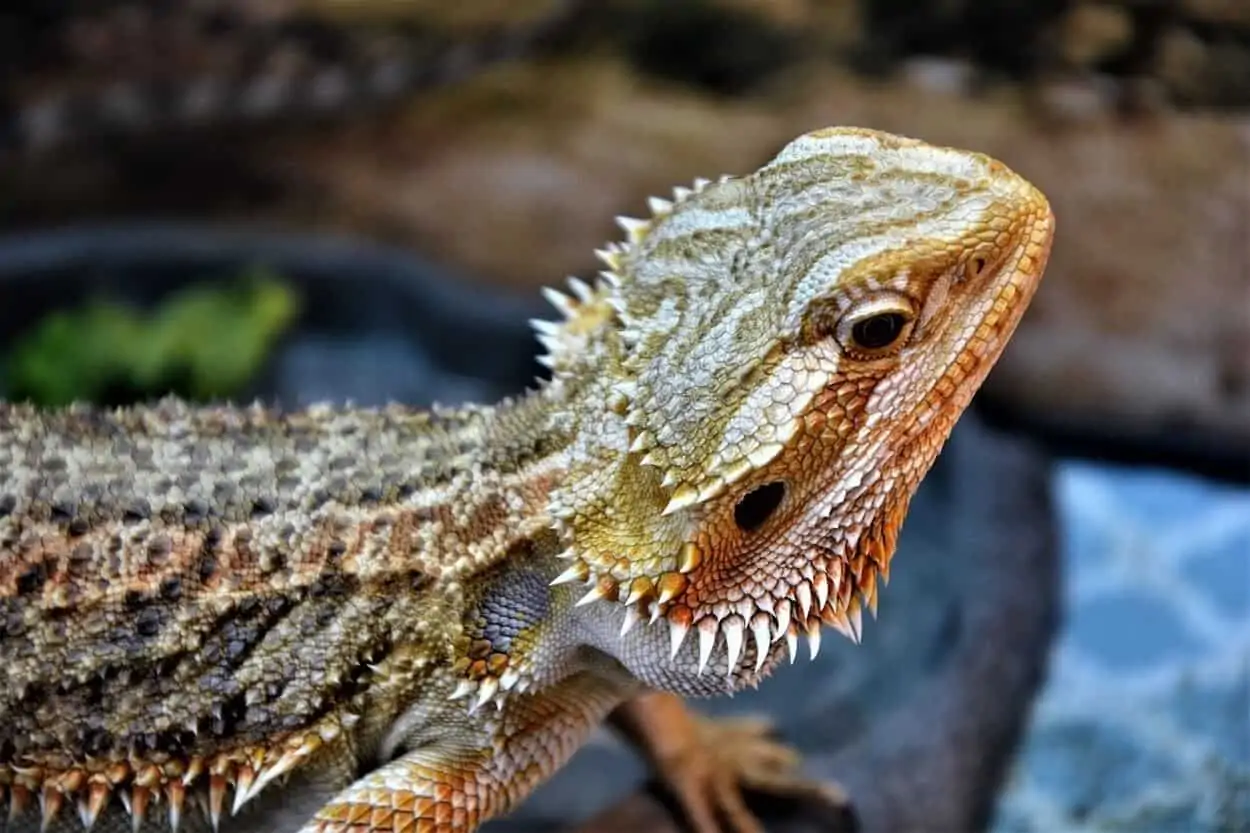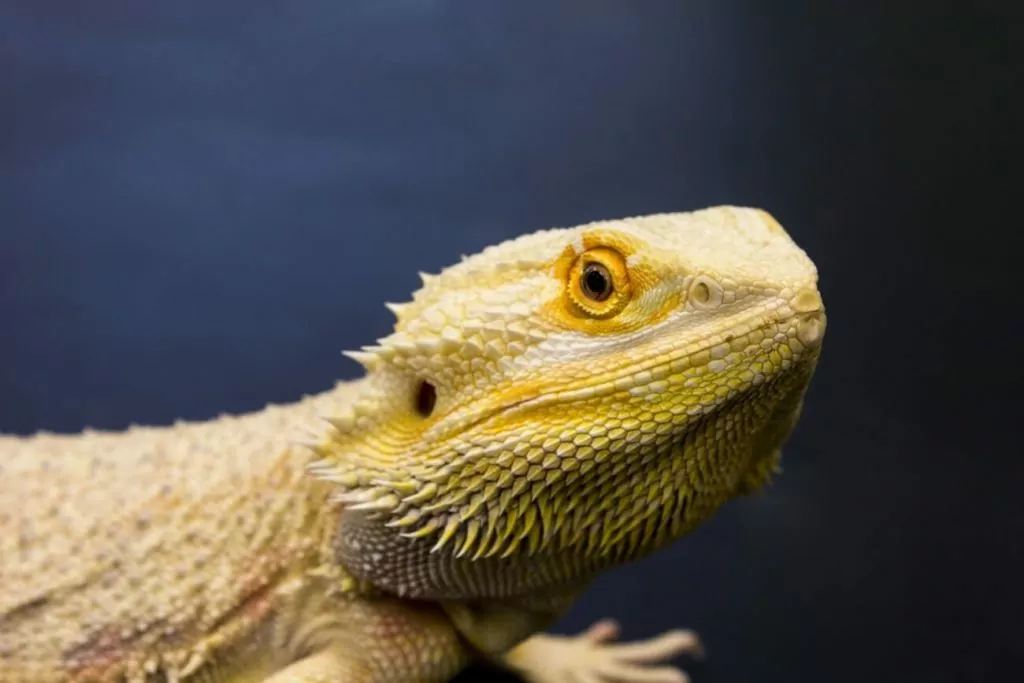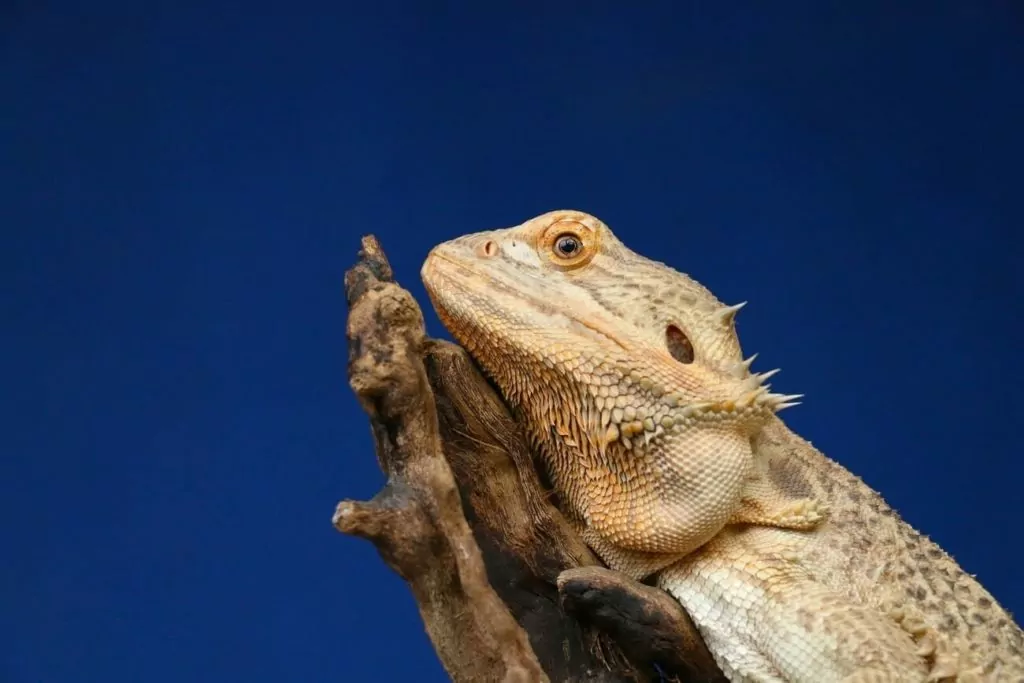Understanding the causes of bearded dragon head bobbing is important if you want to provide your pets with the best care possible. While it’s not always clear, learning to interpret this sign can help you make crucial changes that allow your beardie to thrive.
To help make this process easier, we’ve put together this handy guide on why bearded dragons bob their heads, and what you should do about it. Reading this will help you become a more informed owner and keep your beardie happy and healthy!
Table of Contents
The Main Reasons Why Bearded Dragons Bob Their Heads
There are a number of different reasons why beardies might display head bobbing behavior. While there are likely some subtleties that can signify the cause of one head bob compared to another, this is not something that we have the ability to perceive.
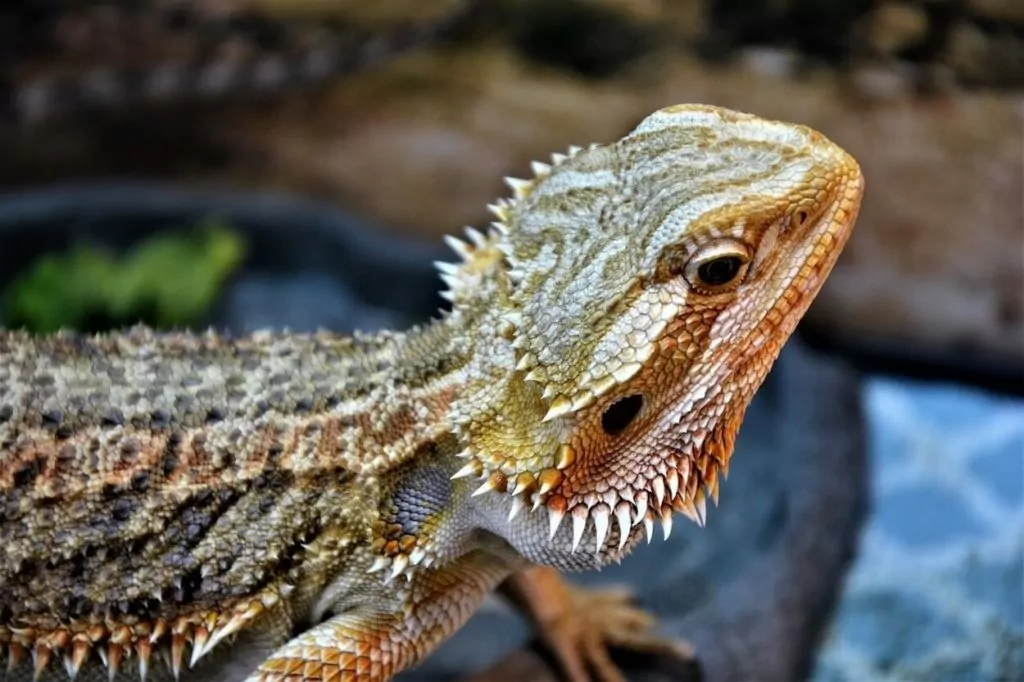
Instead, you have to look at this from a bird’s-eye view if you want to figure out the cause. And fortunately, this process isn’t as hard as it seems.
Bearded dragon head bobbing is usually a reaction to something in its environment that is making it feel uncomfortable or uneasy. It may be feeling stressed, trying to defend its territory, or maybe it’s looking to find that perfect love connection. For the most part, this behavior is perfectly normal for a beardie and is usually nothing to be concerned about (more on that later).
To help you tell the difference, here are the main reasons to help you figure out the cause.
1. They’re Feeling Territorial
One of the main reasons why you may see a bearded dragon bobbing its head is that it’s trying to establish some kind of dominance over its territory and show how mighty they are (even if that territory is just a glass tank). Depending on the situation, it could seem like they’re bobbing their head at nothing.
This is very normal behavior that mimics a wild bearded dragon’s constant need to defend its territory in the harsh environments of the Australian outback. We can see both male and female bearded dragons exhibiting this instinctive behavior, but this particular kind of aggressive head bobbing is mostly done by male bearded dragons.
Expert Tip: Having two bearded dragons in an enclosure that’s too small, will often trigger this territorial defense behavior. To avoid potentially violent disputes over turf, it’s best to give your beardies their own living spaces.
2. They Might Be Interested In Mating
A romantic dinner and a bouquet of flowers might be the way a human male attempts to entice the ladies, but one way a bearded dragon can show its desire to mate is through a vigorous display of head bobbing.
Your male bearded dragon can use this head bobbing to signal his readiness to mate and to appear desirable to all the available females. Your female beardie may also show a modified version of this head bobbing. However, her version is a slower and more subtle motion that demonstrates her desire and willingness to submit to a male beardie’s advances.
You might see this behavior displayed in tandem with a black beard. While there’s still no guarantee that mating is the cause, this combination can give you a bit more confidence in this theory.
3. They’re Signaling Submission
When bearded dragons are placed together, there will usually be a lot of macho-style jockeying for position in their hierarchy.
Larger bearded dragons will often confront a smaller or weaker beardie with quick, distinct head bobs. If the smaller reptile decides that the larger one is too intimidating (or it just senses that confrontation is not worth the risk) it will usually show submission with a slow bob that is often accompanied by a funky arm waving motion.
Like we mentioned earlier, having two male bearded dragons in one tank is usually not a good idea. The dominance and submission situation can get out of hand if not monitored closely, so keep all of your beardies safe by providing them with their own tanks.
Expert Tip: It’s worth pointing out that this submissive behavior can be displayed toward other animals and even humans. If you have large pets that pass by their enclosure your beardie could be trying to show that it’s not interested in a fight.
If you have recently gotten your bearded dragon and they aren’t totally used to you yet, you could see this behavior directed at you as well. If this is the cause it will likely go away after they adjust and you spend more time handling them.
4. They’re Acknowledging Another Animal
Sometimes, you will see a kind of non-aggressive head bobbing that seems to have no real purpose or is directed at nothing in particular. On closer inspection however, you may notice that this happens whenever your beardie is around another bearded dragon or even another pet.
There is a debate among experienced bearded dragon owners as to whether this mild kind of head bobbing is some sort of bearded dragon greeting ritual or a subtle signal that says, “I have my eye on you, so no funny business.”
While this question may never be solved to anyone’s satisfaction, we do know that beardies do best on their own and usually prefer to acknowledge each other from a distance.
5. They Are Trying To Intimidate Another Bearded Dragon
As we’ve hinted at above, bearded dragons will often use head bobbing in an attempt to intimidate another beardie.
In nature, the way for a bearded dragon to deal with a potential threat is to try to make itself look more menacing (which is also one of the reasons why they puff up). This behavior translates to your tank set up, so your bearded dragon may try to use intimidation to show dominance over its territory.
The goal here is for them to let other beardies know that they should stay away from his female or to prove that he is the alpha male of the group. This intimidation is usually signaled by jerky, vigorous head bobbing, and it sends a very clear signal to other bearded dragons that they should signal submission or they may risk a confrontation.
Assuming you’re one of the many bearded dragon owners who only owns one (or at least keeps them in separate enclosures), this reason probably won’t apply to you.
Why Do Bearded Dragons Bob Their Heads At Humans?
If it seems as though your bearded dragon is bobbing its head at you, you’re not imagining things.
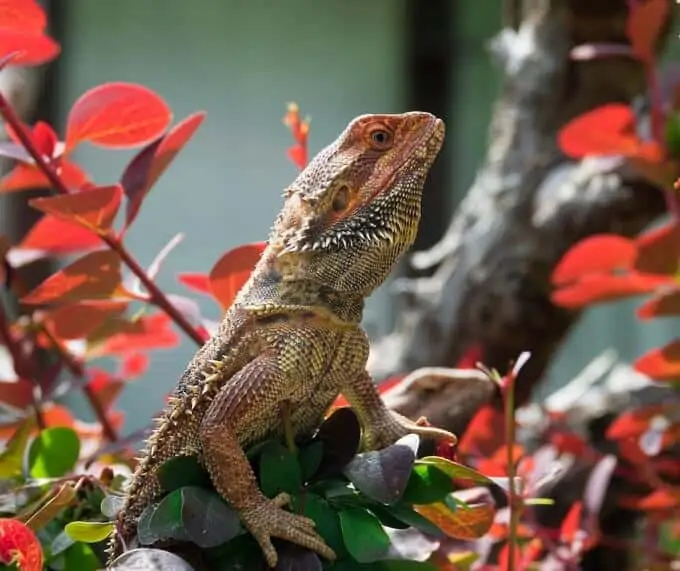
Beardies use head bobbing to communicate how they’re feeling. Your reptile (especially if it is new to your household) may be trying to show you that it’s not afraid of you and that it considers itself to be a more dominant creature than you are.
Conversely, depending on the type of head bob, it can mean that it has acknowledged you as the dominant creature and is offering you a kind of submission. Your beardie may also be trying to tell you that it is feeling nervous or stressed.
Over time, your lizard will learn to trust you, and this behavior will tend to lessen or disappear altogether. If it doesn’t, that means there’s likely another cause for this behavior.
Why Do Female Beardies Bob Their Heads?
As you spend more time around different kinds of bearded dragons, you may have noticed that it’s usually male bearded dragons that do the majority of the head bobbing. However, female bearded dragons will exhibit various forms of head bobbing on occasion too!
Instead of the quick, more aggressive head motions of male bearded dragons, females prefer to send calmer head bobbing signals (most of the time). By doing this she may be trying to demonstrate submissiveness to another bearded dragon, or she could be trying to show a male that she is willing to accept his advances.
On the other hand, she may be trying to demonstrate dominance over other females in the group! It’s unlikely that this will be the cause assuming you’re keeping each beardie in a separate enclosure.
What Causes Them To Bob Their Heads While Sleeping?
Bearded dragons do a lot of head bobbing while they are awake, but on occasion they’ll even bob their heads in their sleep!
If you’re new to the world of bearded dragons, this probably seems bizarre or even a real reason for concern. However, it’s actually quite normal beardie behavior and is nothing to worry about.
Bearded dragons like a dark and cozy sleeping environment in their habitat setup. This means if you have a bright light always shining in their tank, this could be causing sleep interruptions. These interruptions often lead to this kind of distressed, frustrated head bobbing.
Expert Tip: It’s also thought that just as humans sometimes jump or jerk in the early phase of sleep, bearded dragons may experience head bobbing as they are falling in and out of sleep. We have so much in common!
Is Frequent Head Bobbing Something To Be Worried About?
If it seems as if your bearded dragon is constantly bobbing its head and you’re worried that something is wrong with it, just relax and know that your bearded dragon is only doing what beardies do.
Lots of times, this frequent head bobbing is one of the best ways your reptile knows to communicate that he or she is feeling uncomfortable, intimidated or even ready to search for a mate. Perhaps the beardie is trying to adjust to a new environment or situation, or it could be reacting to another pet.
Even the live prey that is placed in their tank can cause stress or a territorial response (although it is uncommon).
There are so many reasons why your bearded dragon seems to be always bobbing its head. After you spend more time with your beardie and get to know him or her better, your pet will be a lot easier to understand, and you’ll be able to rectify their source of discomfort or unease.
Closing Thoughts
Bearded dragon head bobbing is something that many new owners misunderstand. They either think it’s a serious problem, or not worth paying attention to.
But as you can see, the correct answer is usually somewhere in the middle.
While head bobbing doesn’t always mean that something is wrong, it might be an opportunity for you to make improvements to the quality of care you’re providing. We believe that, over time, all owners should strive to go from “good” to “great” in all aspects of care.
Listen to your pets, try your best, and we’re confident that your beardie will be happy with the results!

